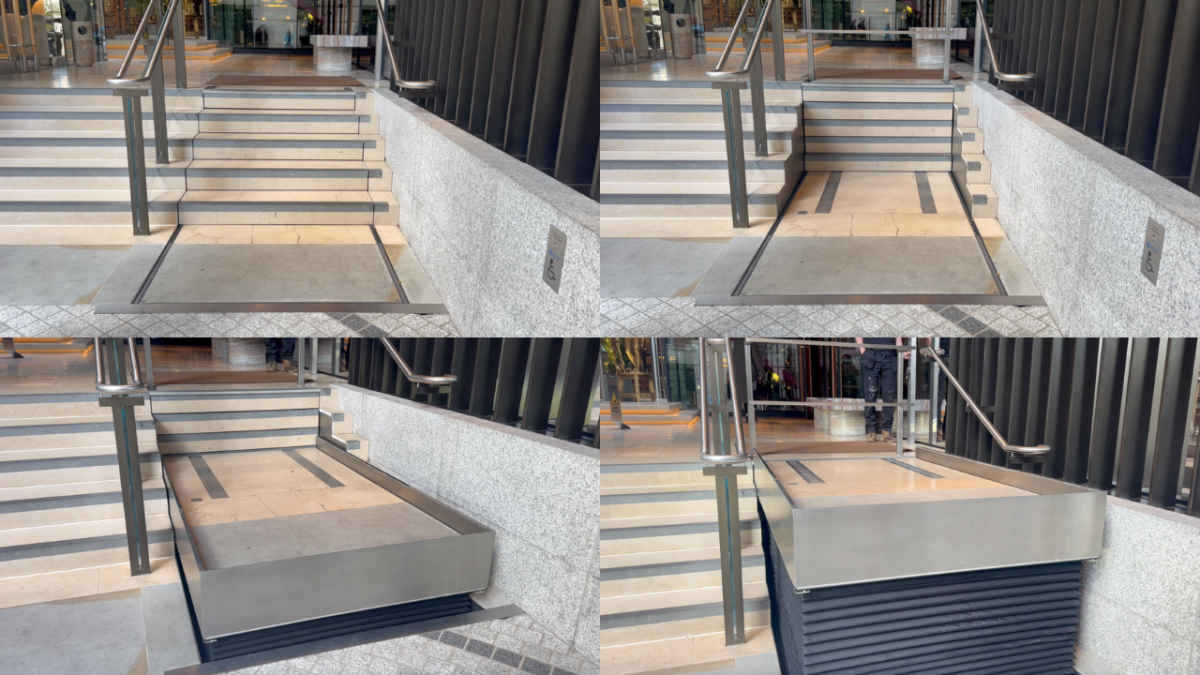Key Takeaways
-
Internal lift bellows protect users and mechanisms while providing a clean architectural finish.
-
When pit depth is limited, bellows replace stainless skirts to maintain accessibility and safety.
-
Sesame engineers validate designs with or without return edges using proven technical data.
-
Support tapes or stitched stabilisers provide additional control in larger lift applications.
Introduction
Bellows are an essential part of accessibility lift design, particularly in heritage and internal environments where space is restricted. They enclose the scissor mechanism, protect users from moving parts, and preserve the visual quality of the installation.
When pit depth is limited, traditional stainless steel skirts cannot be fitted. In these cases, bellows offer a reliable and attractive alternative that meets both safety and aesthetic standards.
Addressing the Challenge: Bellows Without Return Edges
In certain internal projects, engineers must design bellows without the usual folded return edges at the rear. These folds, typically around 40 mm, add rigidity but are not always necessary indoors where the lift is sheltered from wind or side loads.
Sesame engineers have confirmed through past installations that bellows without returns can perform safely and effectively, provided the material strength and geometry are correctly specified.
The Accessibility Lift Solution for Limited Pit Depth
Where lift pits are shallow or architectural constraints restrict depth, bellows provide complete enclosure of the scissor mechanism. They prevent dirt ingress, protect the mechanism, and maintain a smooth exterior profile.
This approach is widely used in internal accessibility lifts such as the Kensington Stairlift, and the Thames Lift.
Support Tapes and Extension Limiters
When bellows are tall or particularly deep, additional stabilisation may be required. Support tapes or stitched threads—sometimes called extension limiters—are integrated within the bellows folds to prevent over-extension at the rear.
This engineering refinement ensures that the bellows move uniformly, minimising bulging and maintaining their shape throughout the lift’s range of motion. It is a subtle but highly effective solution for precision-engineered accessibility lifts.
Typical Bellows Specifications
| Specification | Typical Range | Notes |
|---|---|---|
| Width | 1130 mm – 1300 mm | Varies by lift platform size |
| Depth | 1400 mm – 1600 mm | Determined by scissor geometry |
| Extended Height | 1800 mm – 3145 mm | Larger bellows used for multi-stage lifts |
| Return Edge | 0 mm – 40 mm | Optional, depending on environment |
| Material | Pre-flex 035 or reinforced synthetic fabric | Chosen for durability and aesthetic finish |
These ranges capture the diversity of Sesame’s custom installations, providing engineers and specifiers with reliable reference data for planning and coordination.
Collaborative Engineering and Quality Assurance
Every Sesame lift design is validated through an engineering review. This includes supplier coordination, precedent checks, and material verification to ensure consistent performance.
When expedited delivery is required, Sesame coordinates manufacturing schedules without compromising on quality or compliance.
Further Reading
Frequently asked questions
What materials are used for Sesame lift bellows?
Bellows are typically made from pre-flex 035 or equivalent reinforced fabric to balance flexibility, strength, and appearance.
Do all accessibility lifts require bellows?
No. They are used when pit depth is limited or when the mechanism must be concealed for aesthetic reasons.
How are bellows stabilised without return edges?
Support tapes or stitched threads act as internal stabilisers, maintaining structure and preventing bulging.
Are bellows easy to service?
Yes. Sesame designs allow bellows to be detached for inspection or replacement without full lift disassembly.
Call to Action
For technical specifications or design assistance with accessibility lifts in limited pit depth conditions, book a Teams meeting with a Sesame Project Manager here.

